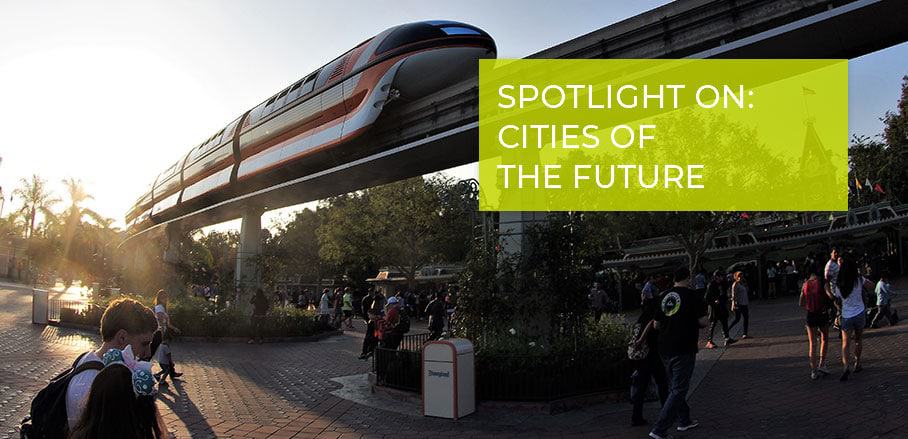Cities Of The Future – More Than Just Flying Cars
Christopher Dekki outlines why inclusivity should be at the centre of future urban planning.
Humanity is a restless species – we tend to muse about the future and wonder what it has in store for us. We are usually eager for a new day, a more exciting reality and the promise of tomorrow. This tendency only seemed to intensify with the dawn of the industrial revolution and the rapid pace of technological advancement in the twentieth century. As such, human beings have become even more curious about the potential of the future. From science fiction novels to films, literature to video games, comic books to art, and so many other forms of media, people continue to use their imaginations to cook up fantastic ideas for what awaits us in the decades or even centuries to come.
Now, these musings about the future often revolve around how human civilisation may someday look and operate – flying cars, wondrously tall skyscrapers, even teleportation and long lives unencumbered by disease. In many ways, these visions of the future remind me of the very contemporary concept of the smart city, where information, technology, and interconnectedness are seen as the very saviours of our inefficient, congested, and dilapidated cities.
Imagination Run Wild . . .
Nevertheless, for all of this imagination, for all of this wonder, for all of this technology and ‘smartness’, something that always seems to be missing from these dreams of a glorious future is the ordinary person. These cities of the future, where technology reigns and life is long, do not actually contain much imagination at all. They always seem to be based on outdated urban and development planning models – the same old roads for cars, but the cars on those roads just happen to be more advanced, sleek, and fully electric.
The same old buildings, just taller, fancier, and greener with impressive water and energy recycling systems (zero waste, zero emission!). As a New Yorker, I think immediately of the newly built Hudson Yards complex on the west side of Manhattan, which truly exemplifies the clean, green, sustainable construction of the ‘future’. But this complex, while impressive and ‘open to the public’, was built at the expense of the public purse, is only truly accessible to a small section of society, and is only sustainable in terms of its operations, not in terms of the behaviours it promotes and the excessive consumption in which it revels.
Building the cities of the future means bucking the trends of the present and daring to dream of the ways in which we can best serve all people, leave no one behind, and create inclusive and resilient communities that have access to essential services. One service that is central to this future reality is transport – so think less about flying cars, smart roads, and intelligent vehicles, these are not going to solve our many interlinked urban mobility crises, and let’s expand our horizons to futuristic cities where public transport is valued, active mobility is promoted, and the state invests in systems that prioritise the needs of the general public.
Mobility Must be Central to Cities of the Future
So how then would an equitable city of the future look in terms of transport and mobility? That metallic sheen and the stuff of science fiction matter less than a city that seeks to serve its population. People of all ages, backgrounds, and abilities would be able to access a wide range of sustainable transport and mobility options. One’s class would not be an obstacle to movement and congestion would be decreased through a focus on modes far beyond private vehicles, even if those vehicles are zero emission.
Public private partnerships in transport and mobility would be properly managed so that the focus is less on profit margins and more on the needs of people. Communities would have a say in how the state deals with the private sector, and participatory planning of roads and transport options would become central to development.
Communities that have been ignored by policymakers for decades would become the primary concern in cities of the future. Whereas transport and mobility systems often avoided these places in the past, leaving them to fend for themselves, the state would now work to incorporate all neighbourhoods into transport planning, ensuring that no community is left behind.
The Time is Now
All of this progress towards more inclusive transport and mobility systems would also mean that society in general will have shifted towards greater concern for the marginalised. The out-of-control inequality we face would become a distant memory because now, in our wonderful cities of future, urban planning prioritises the needs of all, not just those with the greatest means. This should be the focus of our collective urban future.
To be clear, there is nothing creative nor wonderful about cities that simply add a futuristic twist to current planning and development models. We have to stop dreaming about the cities of the future and start working to make our existing cities more equitable. While the authors and filmmakers of decades past filled our collective imaginations with flying cars and skylines that stretch beyond the horizon, the city of the future should really be something far simpler – one that leaves no one behind when it comes to key elements of urban life, from housing to transport.
So as mass media celebrates commercial space travel, the smartest, most sleek private vehicles, and cities that look like something out of a film, we need simply look around and see that only by solving our most urgent urban challenges and rampant inequality, will we actually succeed in achieving true cities of the future.
